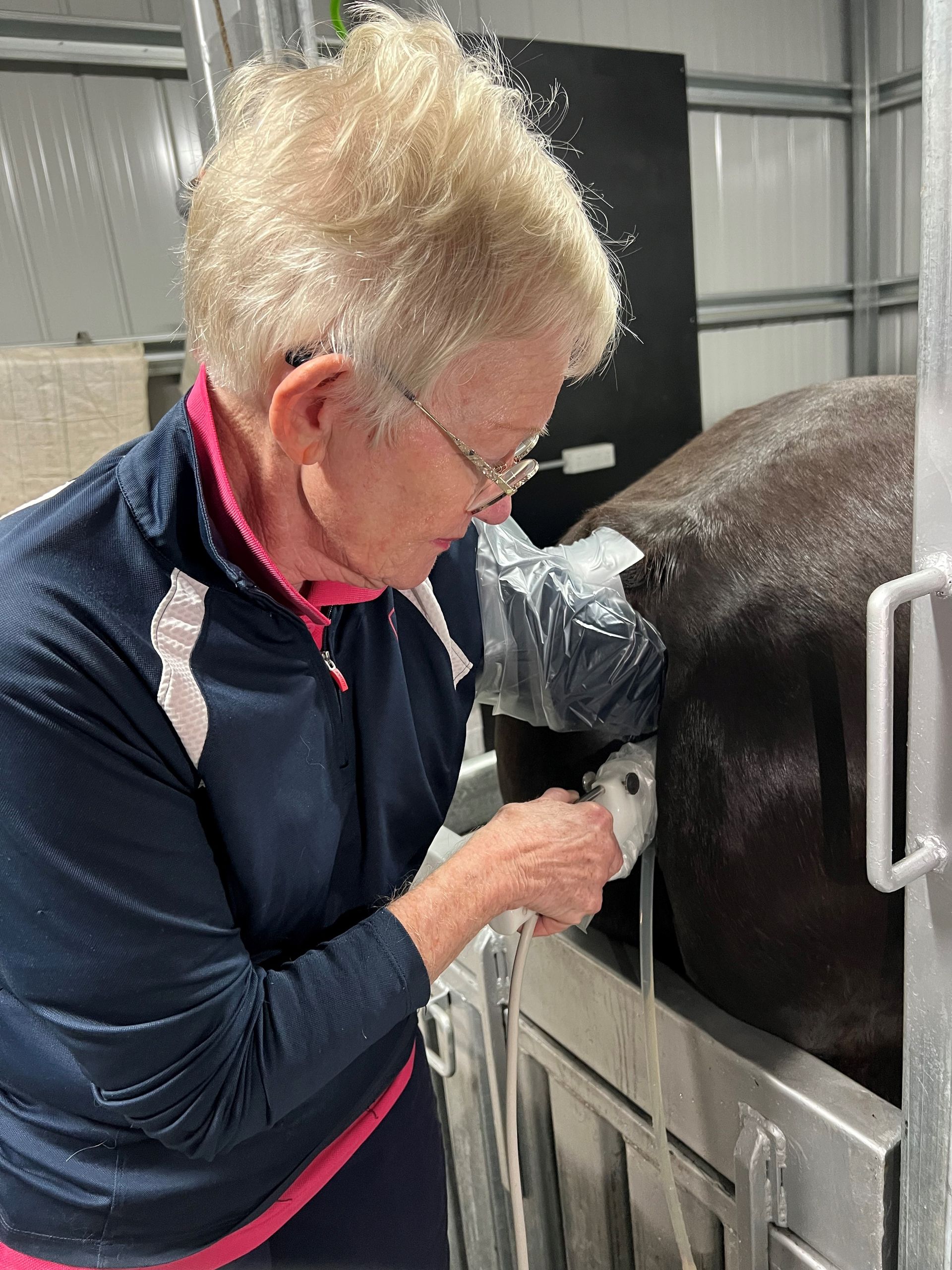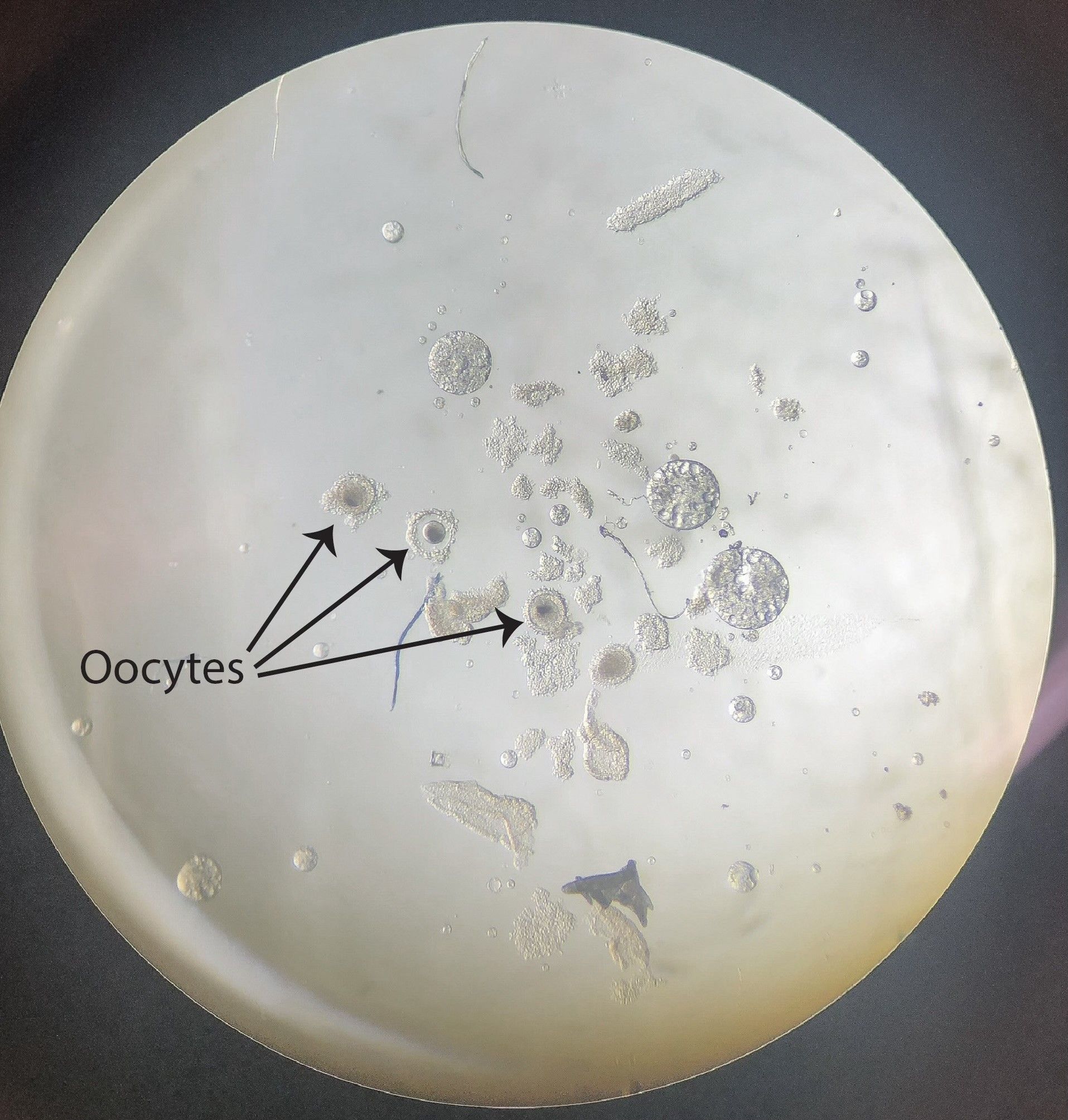Firstly, oocytes (eggs) are collected from the donor mare. These are obtained in two ways:
1) OPU (Ovum Pick Up): The mare is seated and prepared for the procedure (cleaned, and her bladder catheterised). The procedure involves flushing and aspirating the contents of each suitable follicle with a double lumen needle. An ultrasound probe with an attached channel to allow the pass of the needle is introduced into the vagina while the operator controls each ovary per rectum.
2) Genetic Salvage: A catastrophic event such as a major limb fracture or serious colic in which a mare may have died during or after surgery, and which requires euthanasia. The ovaries can be removed and shipped/transported to the facility as soon as possible. (Details of shipment requirements can be obtained by contacting Robyn or Susanne at Equivet Breeding Centre.)
Upon arrival at our lab, the follicles in ovaries are scraped to recover the oocytes. They are then placed in a specific solution and examined. Degenerating oocytes are then discarded. Acceptable oocytes are then placed in another media until they reach a desired level of development.


